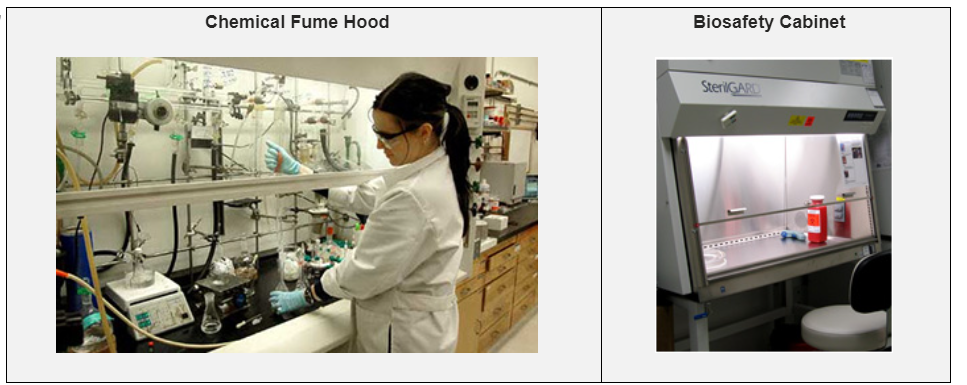Biosafety Cabinets
S3: Science Safety Security

Biosafety cabinets (BSCs) are one type of biocontainment equipment used in biological laboratories to provide personnel, environmental, and product protection. Most BSCs (e.g., Class II and Class III) use high efficiency particulate air (HEPA) filters in both the exhaust and supply system to prevent exposure to biohazards.
There are several designs of biosafety cabinets which provide different levels of protection to the worker and to the research material. There are three classes of biosafety cabinets designated in the United States: Class I, Class II, and Class III. Class I biosafety cabinets are infrequently used and provide personnel and environmental protection but no product protection. Class II and Class III cabinets provide personnel, environmental, and product protection. Class II biosafety cabinets are widely used in biological research laboratories and are differentiated into types such as A1, A2, B1, or B2.The classification for the majority of biosafety cabinets used in the United States is Class II Type A2. The naming system given here is the one used in the United States and in CDC/NIH guidance
Biosafety in Microbiological and Biomedical Laboratories (BMBL) Appendix A. Other naming conventions have been used in the past or in other countries.
Laminar flow hoods (e.g., “clean benches”) are not biosafety cabinets. Laminar flow hoods provide a clean or sterile area to protect the work product, but discharge air towards the worker. In work with infectious agents, toxins, or cultures, use of laminar flow hoods may expose the worker to the biological material. Likewise, chemical fume hoods cannot be used in place of biosafety cabinets. Chemical fume hoods are used to protect personnel from chemical exposure and are not appropriate for work involving infectious agents or toxins. Biosafety cabinets must be inspected by trained personnel on a regular basis and be “certified” as safe for work involving infectious agents or toxins.
Biosafety Cabinets vs. Fume Hoods
Both chemical fume hoods and biosafety cabinets are specialized types of laboratory equipment. While chemical fume hoods and biosafety cabinets look similar and both protect laboratory workers from laboratory hazards - their purpose, function, and operation differ significantly.
A chemical fume hood is designed to remove chemical fumes and aerosols from the work area while a biosafety cabinet is designed to provide both a clean work environment and protection for employees who create aerosols when working with infectious agents or toxins.

A chemical fume hood protects the user while a biosafety cabinet protects the user, the environment, and the material. Biosafety cabinets have high-efficiency particulate air (HEPA) filters while chemical fume hoods do not. The HEPA filter in the exhaust system of a biosafety cabinet will effectively trap all known infectious agents and ensure that only microbe-free exhaust air is discharged from the cabinet (i.e., 99.97% of particles 0.3 µm in diameter and 99.99% of particles of greater or smaller size).
The images below show basic examples of the airflow design for the two types of cabinets.

The chart below characterizes the differences between a chemical fume hood and a biosafety cabinet.

